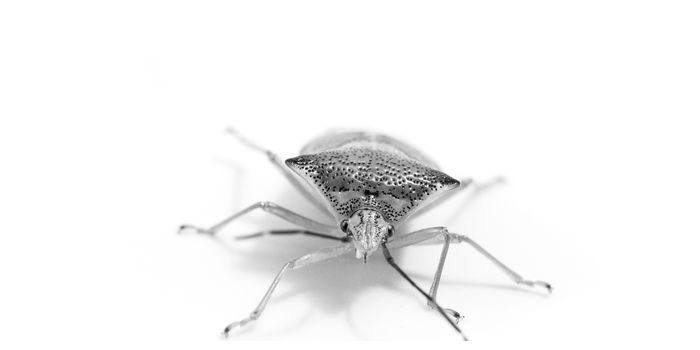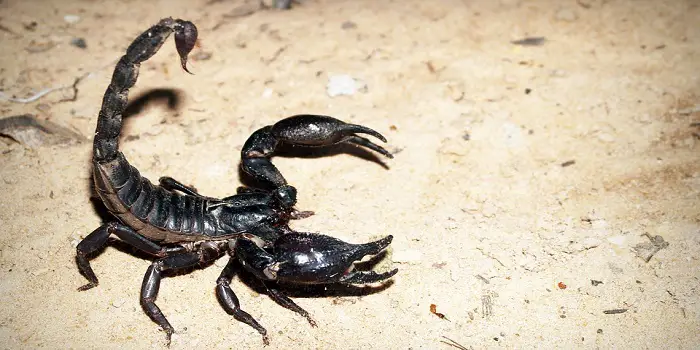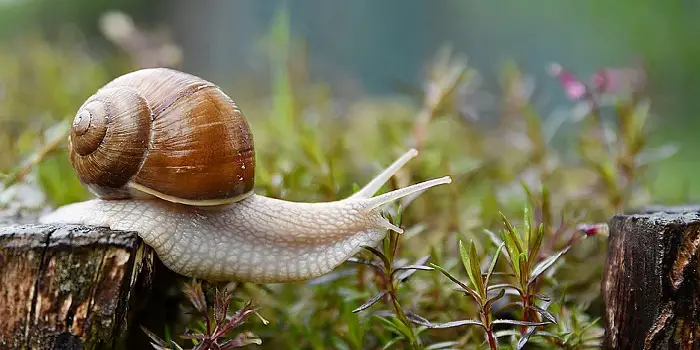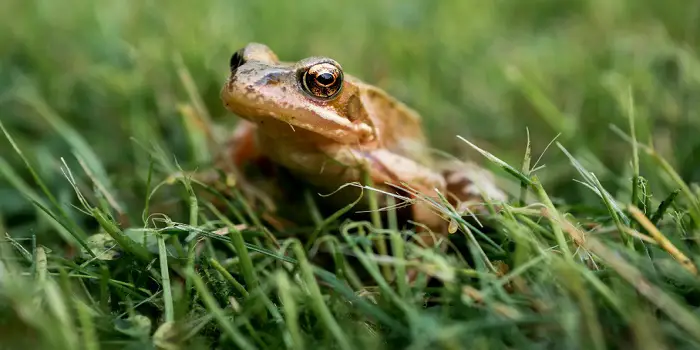
There are several small white bugs in the house that can be tough to identify.
You don’t know where these tiny translucent bugs exactly came from.
Some might think they’re all the same type of bug, but there are actually many different types.
One common among all these white bugs is dust mites.
These little guys may go unnoticed, yet they can be harmful to those who live inside the house.
Many others are harmless, but you should never try to touch or disturb them right away without knowing what they are.
Fortunately, there are multiple ways of getting rid of them, and the methods for most of these bugs are nearly identical.
Below I will discuss these ways along with different types of bugs that look like dust, so the next time you see them, you can identify and deal with them better.
Different Bugs That Look Like Dust
Many people don’t realize that there are tiny white bugs living inside their homes.
You might mistake them for dust particles, but upon closer inspection, you’ll see that they’re actually bugs.
The specific type of bug varies depending on where in your house you find them.
Here is a list of different types of bugs that look like dust:
1- Dust Mites
Despite being nearly invisible to the naked eye, dust mites are actually quite common in household environments and can be found almost anywhere in your home.
They feast on dead human skin cells and tend to gravitate toward humid areas where such cells often collect. This includes places like beds, sofas, rugs, and carpets.
To dust mites, a warm and humid environment is optimal. They appear to worsen in summer because of the hot temperature, which causes them to multiply faster.
However, allergies caused by dust mite allergens can actually worsen in winter.
When it’s cold outside, and humans spend more time inside with their windows shut, large numbers of dust mites seeking warmth flow into the house through clothes and bedding – particularly mattresses.
2- Mold Mites
Mold mites are insects that, as their name suggests, drink mold for sustenance. Due to their size and brown coloration, they often go unnoticed by humans.
They frequently reside on molded surfaces and blend in so well that they’re almost impossible to spot without close inspection.
Although they neither bite nor feed on people, they are just as dangerous as the mold colonies they infest.
3- Booklice
Booklice are little insects that are usually light brown in color. They got their name from the fact that they often feed on fungi, algae, molds, and glue found in old books.
These insects can be mistaken for dust because they commonly live in moist areas with dusty books, papers, or cardboard stacks.
4- Whiteflies
Whiteflies are insects that share many similarities with aphids.
To clarify, they have wings and often reside on plants where they use a sharp object to puncture the plant in order to drink its sap.
They get their name from the whitish color of both their bodies and wings, which is also due to a white powdery substance that coats them, making them appear as if covered in dust.
5- Mealybugs
Mealybugs and whiteflies often look so alike that people mistake one for the other.
Both are small, winged insects that live on plants and feed off of sap. Mealybugs’ bodies, though, are covered with white powdery wax.
Another difference is that mealybugs also lay their eggs in cotton-like sacs rather than simply depositing them willy-nilly, as many other types of bugs do.
6- Woolly Aphid
Woolly aphids are ordinarily green or blue but have a white, powdery coating that makes them look like they’re dusted.
They live on plants and eat the leaves, buds, and bark. Woolly aphids aren’t poisonous to humans or particularly harmful.
7- Assassin Bugs
Assassin bugs are actually much larger in size than the more common dust-resembling bugs. Their bodies and heads tend to be quite lengthy, as well as their legs.
They can come in a multitude of colors, including orange and black, but also green and brown. Rather ironically, assassin bugs feed off of other smaller insects such as flies, aphids, or larvae beetles.
When they go out to hunt for food themselves, they have been known to cover their entire bodies with dust particles so that from afar, they give the appearance of being nothing more than another piece of harmless dust floating through the air.
8- Plaster Bagworms
Plaster bagworms are small, worm-like creatures that live inside a hard shell. They are usually grey or brown and can be found on walls, ceilings, and in closets.
The body of these insects is segmented, and they have small legs that help them move around. Plaster bagworms are known to eat materials such as plaster, woolen materials, silk fabrics, and spider webs.
9- Young Bed Bugs
While bed bugs are light brown to red, their young, called nymphs, are white or yellowish.
Especially if they haven’t fed on blood yet, you may be able to see them as small white bugs.
These bed bug nymphs molt five times before they become adults.
Each time they molt, they grow larger and turn darker in color until they eventually become the reddish-brown that we typically associate with bed bugs.
10- Grain Mites
Also called flour mites, grain mites are approximately 1/50th of an inch long.
They have soft bodies that are pearly or grayish-white in color, with eight legs that range in color from pale yellow to reddish brown.
Each leg has a claw, and their larvae have six legs. Once they molted into nymphs or juvenile grain mites, they grew another two legs.
Grain mites consume various types of food like processed grains, cheese, flour, pet food, powdered milk, wheat germ, and yeast.
If you see a group of white mites moving around aimlessly, they are probably looking for their next meal. Not only can they be found in homes but also in poultry houses as well as abandoned bee hives.
So, these are all the different types of insects or bugs that could be mistaken for dust particles.
The next time you see any of these tiny white bugs in your home, don’t panic! Just follow the steps below to get rid of them.
Treating Dust Mites and Other Tiny Bugs
Many insects love dirty and dusty environments, so cleaning your house’s surfaces will get rid of most bugs.
Unfortunately, not all bugs can be eliminated by cleaning dust since some insects live on plants.
If you have indoor plants, clean the leaves and remove any visible bugs that resemble dust particles.
Although dust mites don’t bite humans, their presence can cause allergic reactions and asthma in people. If you want to get rid of dust mites, you should:
- General clean your house and remove any potential food sources from the dust mites.
- Change your bedding, pillowcases, and blankets frequently and wash them in hot water to kill the dust mites living on the fabric.
- Put up dustproof coverings on the mattresses and pillows.
- Use a dustbuster and/or vacuum often, targeting places like furniture, carpets, and sofas.
- Lowering humidity is key, so a humidifier might be extremely beneficial to get rid of dust mites as they reproduce best in moist surroundings.
Besides the above, using a eucalyptus essential oil spray can be effective for dust mites and other tiny white bugs in your home.
Mix together 2 cups of distilled water, five drops of organic liquid soap, and 30 or more drops of eucalyptus essential oil in a spray bottle.
This mixture not only repels but also kills dust mites when sprayed on sofas, carpets, beds, and mattresses.
The Conclusion
As you can see, some of the tiny white bugs that look like dust are actually quite harmful to smaller insects, while others pose no real threat to humans.
You may deal with them better if you identify them and know what to do.
However, it is always best to consult with a professional if you are unsure about what type of bug you are dealing with and how to eliminate them.
Share the post "What Are The Tiny White Bugs That Look Like Dust in My Home?"

Welcome to ProShieldPest.com. I am Tina Jones. I have been working as a pest removal professional in Winslow, Arizona lately. At present, I love to spend my time with my family as a retiree.
Here I share all my knowledge and experiences to help people understand better how they can stop pests at their homes without actually killing them. Hopefully, the information you will find here will help in safeguarding your home! You can check more about me here.




